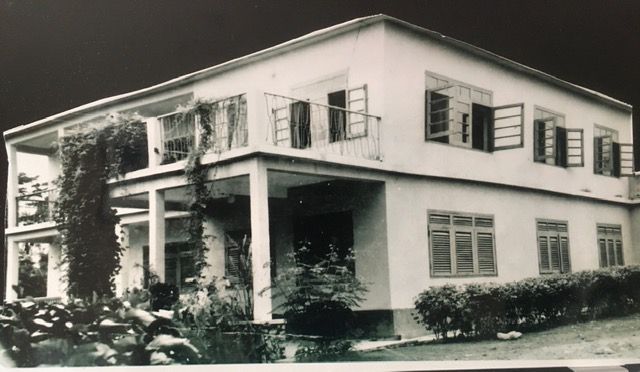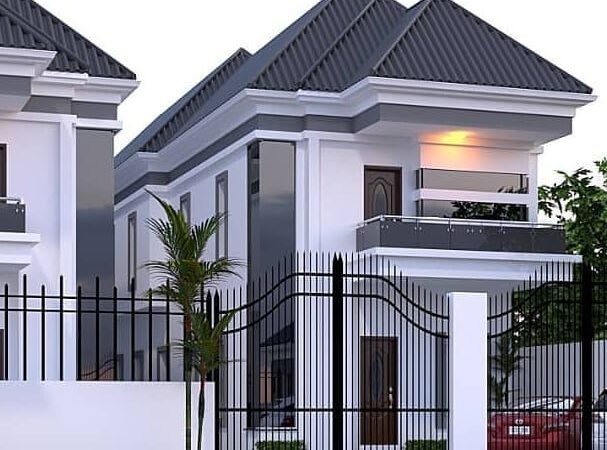A Shift from Large Windows and Low Roofs to High Roofs and Smaller Windows
Africa’s architectural landscape has seen significant transformations over the centuries, shaped by cultural evolution, climate, technological advancements, and globalization. While traditional African architecture, particularly in countries like Nigeria, was characterized by low roofs and large windows for ventilation, modern architectural trends have shifted toward high rooftops and smaller windows. This change has had a profound impact on the way buildings are designed, constructed, and experienced across the continent. In this article, we will explore how these architectural shifts have influenced construction practices, focusing on the transition from large windows and low roofs to the modern preference for high rooftops and smaller windows.
Traditional African Architecture: The Low Roof and Large Window Design
Historically, African architecture has been closely tied to the region’s environmental needs, cultural practices, and available resources. In Nigeria and many other parts of Africa, traditional homes were designed with low roofs and large windows. This architectural style was not accidental but driven by a deep understanding of the tropical climate and a desire to enhance natural ventilation.

- Low Roofs and Cooling Effect The low roofs in traditional African homes were designed to provide protection from intense sunlight and high temperatures. By keeping the roof closer to the living space, the structure could retain coolness, especially during the night when temperatures drop. The materials used, such as thatch or clay, were excellent insulators, helping maintain a comfortable indoor environment without relying on modern cooling systems like air conditioning.
- Large Windows for Ventilation Another defining feature of traditional African homes was the use of large windows. These were intentionally designed to allow maximum airflow, creating natural cross-ventilation that kept the interior spaces cooler. The large openings in walls allowed the hot air to escape and cool breezes to circulate, an essential feature for coping with the hot and humid climate.

The Shift to High Roofs and Smaller Windows: Modern Influences in Nigerian Architecture:
With the advent of modern construction techniques, new materials, and the influence of global architectural styles, the once-common low roofs and large windows have largely given way to high roofs and smaller windows in many parts of Africa. This shift has been influenced by a variety of factors, including changing lifestyle preferences, advances in building technology, and increased access to alternative climate control methods.
- High Roofs for Temperature Regulation The move toward high rooftops has introduced a new way of managing temperature within buildings. Modern African architecture often features steeper and higher roofs, a trend adopted from Western and Middle Eastern architectural influences. High roofs create more space between the ceiling and the living area, which allows for better air circulation within the structure. The warm air naturally rises to the upper part of the building, creating a cooler environment below. This design is particularly beneficial in tropical climates where the sun’s heat can quickly raise indoor temperatures. In some cases, the roof design incorporates additional features like gable vents or whirlybirds to further enhance air circulation and reduce heat buildup.
- Smaller Windows for Climate Control The shift toward smaller windows in modern African architecture is another significant change that contrasts with traditional designs. Smaller windows are increasingly favored for several reasons:
- Thermal Control: Smaller windows help in regulating the internal temperature by reducing the amount of direct sunlight that enters the building. This is especially important in urban areas, where modern buildings are often equipped with glass that absorbs heat quickly. By reducing window size, architects are able to prevent excessive heat buildup, thus reducing the reliance on artificial cooling systems.
- Security and Privacy: Smaller windows offer greater security, a growing concern in many African cities where urbanization has led to denser populations and increased crime rates. Additionally, smaller windows provide more privacy, especially in homes built close together in rapidly growing urban areas.
- Energy Efficiency: With the rise of sustainability in modern architecture, smaller windows also contribute to energy efficiency. Large windows, especially in hot climates, can lead to increased cooling costs. By minimizing window size, modern African buildings reduce their dependency on air conditioning, making them more environmentally friendly and cost-effective.
Factors Driving the Evolution in African Architecture
- Globalization and Western Influence One of the primary reasons for the shift in architectural trends is the influence of globalization. As Africa’s economy has grown and urbanized, so too has its exposure to Western and Middle Eastern architectural styles. The introduction of international architectural firms, modern building technologies, and Western lifestyle aspirations have contributed to the adoption of designs like high roofs and smaller windows.
- Advances in Building Materials Modern building materials, such as concrete, steel, and glass, have allowed architects to experiment with new forms and structures. In the past, traditional African homes were often built with natural materials like clay, mud, and thatch, which influenced their low-roofed design. However, the availability of stronger materials has given architects the flexibility to design taller, more durable structures with high roofs that weren’t possible before.
- Urbanization and Modern Lifestyles Africa is undergoing rapid urbanization, with cities expanding at unprecedented rates. This shift toward urban living has also led to changes in building designs. High-rise buildings with high ceilings and smaller windows are more practical in urban environments, where space is limited and natural ventilation may be less effective due to the density of buildings. Additionally, modern lifestyles prioritize air conditioning and artificial lighting over natural ventilation, reducing the need for large windows.
Effects of Modern Architecture on Building Construction in Africa (Nigeria)
The adoption of high roofs and smaller windows has influenced not only the aesthetic of African buildings but also the way they are constructed. Construction companies now use more advanced materials and techniques to support these designs, leading to more efficient and durable structures. However, these changes have also introduced new challenges, such as the need for more precise engineering to accommodate higher roofs and the integration of modern cooling systems to compensate for the reduced ventilation from smaller windows.
- Construction Costs The shift to high roofs and modern designs often increases the cost of construction, as these structures require more materials and sophisticated building techniques. However, the long-term benefits of energy efficiency and durability can outweigh the initial costs.
- Climate Adaptation Modern African architecture must still account for the continent’s diverse climates. High roofs and smaller windows, while effective in urban areas, may not be suitable for all regions. Rural areas and communities with limited access to modern technologies may continue to rely on traditional designs, which are more in tune with the local climate and resource availability.
Conclusion
Architecture in Africa, particularly in countries like Nigeria, has evolved from its traditional roots of low roofs and large windows to the modern preference for high rooftops and smaller windows.
This transformation reflects the continent’s rapid urbanization, globalization, and access to new materials and technologies. While traditional designs were tailored to natural ventilation and climate control, modern architecture prioritizes energy efficiency, security, and aesthetics, influencing construction practices across the region. As Africa continues to urbanize and modernize, it is crucial to strike a balance between maintaining cultural architectural heritage and adopting designs that meet the demands of contemporary life. The architectural evolution on the continent serves as a testament to Africa’s ability to adapt and innovate while still acknowledging the wisdom embedded in its traditional practices.
